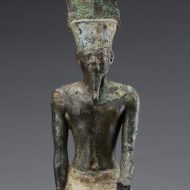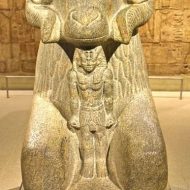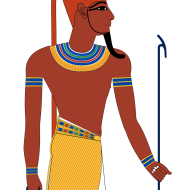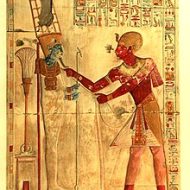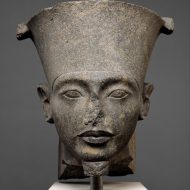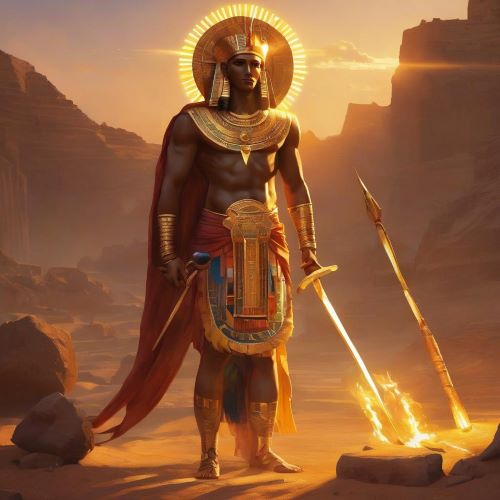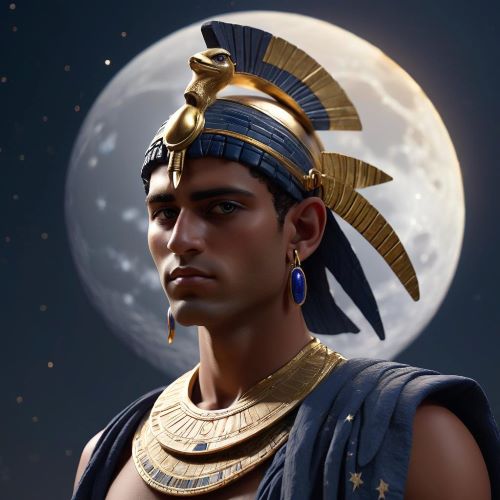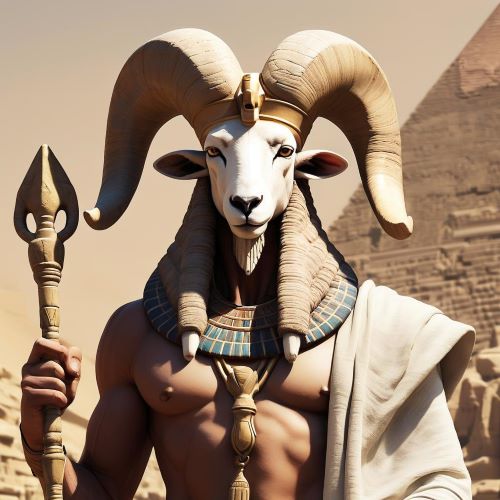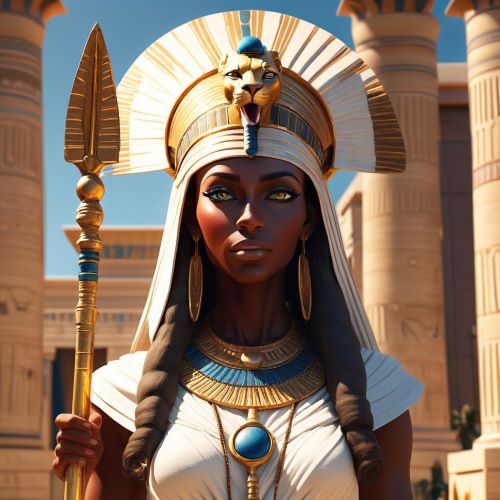Amun : The Creator God
Listen
At a glance
| Description | |
|---|---|
| Origin | Egyptian Mythology |
| Classification | Gods |
| Family Members | Mut (Wiffe), Khonsu (Son) |
| Region | Egypt |
| Associated With | Creation, Sun |
Amun
Introduction
One of the most significant deities in the Egyptian pantheon is Amun, who was a member of the Theban Triad and the Ogdoad. He was often paired with Ra, who shared many similarities with Amun. Both were regarded as the head of Egypt’s pantheon.
Amun was an unusual figure in Egyptian theology due to the characteristics that are commonly observed in modern deities such as Islam’s Allah, Judaism’s Yahweh, and Christianity’s God. He was also unknowable to his fellow deities.
It’s believed that Amon was one of the original eight deities of the Hermopotolite creation myth. His cult reached Thebes, and he became the patron of pharaohs under Mentuhotep I, from 2008 to 1957. At that time, he was already regarded as the god of the sun, Re of Heliopolis.
Physical Traits
Amun is often depicted as a variety of animals, such as a goose, a snake, or a ram. He is also depicted as a man with a head of a ram, a frog, a crocodile, or a royal cobra. He was usually portrayed as a bearded man with a double plume wearing a headdress. This symbolizing fertility was associated with his role as the Amun-Min.
Most notably, he was depicted as a bearded man wearing an oversized feather-patterned tunic and a short kilt. Although he was often depicted with blue skin, later depictions showed him in a more red-colored garment. Other notable features of Amun included the head of a ram-headed snake, a primordial goose with a feather-like head, and a ram headed sphinx.
Family
It’s believed that Amun was the original indivisible and inscrutable creator of everything in the universe. When Ra and Amun merged, they became both visible and invisible deities, which was very appealing to the Egyptians’ Ma’at or balance concept.
Amun had a relatively simple family tree compared to other Egyptian deities. According to the beliefs of the Thebans, he was a part of a group called the Theban Triad, and he was accompanied by his wife, Mut, and their son, Khonsu. The Hermopolis religious cult, on the other hand, believed that Amun was a part of the Ogdoad, an alliance of eight primordial deities that formed the universe.
He was known as Amun-Ra, and he was the protector of the pharaoh. Royal women had mixed feelings about him and his cult. Nefertari was given the title of God’s Wife, and Hatshepsut, the female pharaoh, claimed that she had the power to rule due to her mother’s relationship with Amun.
Other names
After he and other prominent Egyptian deities were merged, he was given various titles, such as Amun-Min, Amun-Ra, Amun-Kematef, and Amonrasonther. The Greeks took his title seriously, and by the time the Ptolemaic period had ended, he had become associated with Zeus.
Powers and Abilities
Amun was widely regarded as a god of various types. He was often depicted as a sun god, a wind god, a protector of kings, a creator of all things, and a sovereign of all the gods. Most Egyptian gods were believed to reside in certain regions, such as the sky, the underworld, or the desert. However, Amun was found all at once.
Although his presence could be felt, it wasn’t seen. Amun’s omnipresence was unlike that of other Egyptian deities. He was also paired with a rare omnipotence, which is regarded as a trait shared with Abrahamic deities. He was often referred to as the “hidden god,” and this term has a specific meaning.
Egyptian deities exploited this fact by using it to gain power over others. Amun’s real name was also not revealed to both humans and gods. The Egyptians believed that learning his true name would cause them to die instantly.
Modern Day Influence
In Heroes of Newerth, a character called Amun-Ra can be played as a hero. The game’s flavor text makes clear that he is not related to the deity. In Assassin’s Creed: Origins, Amun was also referenced in its playable regions by the Temple of Siwa, which is located in Western Egypt.
Related Images
Frequently Asked Questions
What is lorem Ipsum?
I am text block. Click edit button to change this text. Lorem ipsum dolor sit amet, consectetur adipiscing elit. Ut elit tellus, luctus nec ullamcorper mattis, pulvinar dapibus leo.
What is lorem Ipsum?
I am text block. Click edit button to change this text. Lorem ipsum dolor sit amet, consectetur adipiscing elit. Ut elit tellus, luctus nec ullamcorper mattis, pulvinar dapibus leo.
What is lorem Ipsum?
I am text block. Click edit button to change this text. Lorem ipsum dolor sit amet, consectetur adipiscing elit. Ut elit tellus, luctus nec ullamcorper mattis, pulvinar dapibus leo.
What is lorem Ipsum?
I am text block. Click edit button to change this text. Lorem ipsum dolor sit amet, consectetur adipiscing elit. Ut elit tellus, luctus nec ullamcorper mattis, pulvinar dapibus leo.
What is lorem Ipsum?
I am text block. Click edit button to change this text. Lorem ipsum dolor sit amet, consectetur adipiscing elit. Ut elit tellus, luctus nec ullamcorper mattis, pulvinar dapibus leo.

